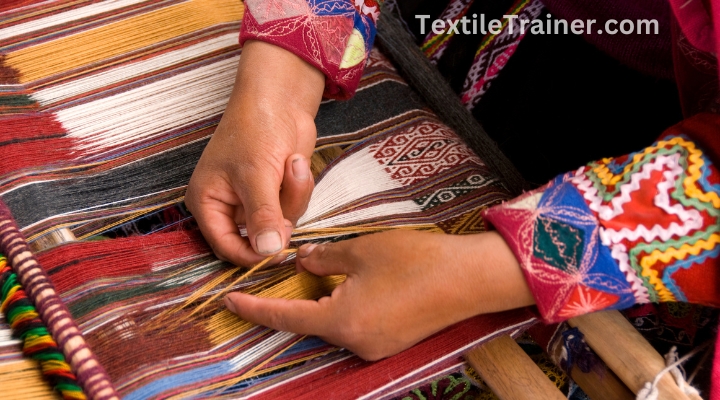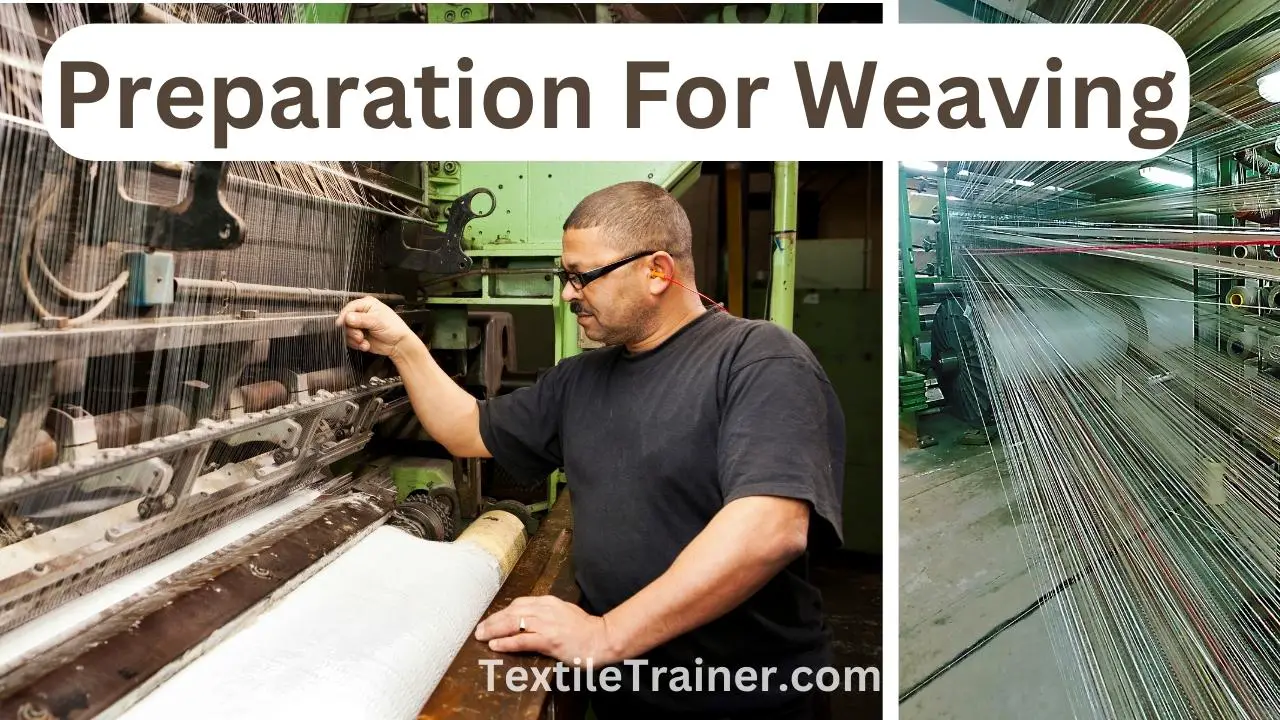Weaving:
Weaving is a major method of fabric construction. Before spinning, the technique was known. Ancient people may have observed interlaced grasses and twigs in birds’ nests and thus developed ways to make clothing, baskets, nets, and thatch structures like huts and fences with them. Perhaps they observed the rushes interlacing naturally as they grew. People discovered that raw materials could be improved before they were woven, and this led to the development of spinning. With time, simple looms were made, operated by hand, and crudely simple. Modern power looms in today’s textile industry perform essentially the same tasks as simple hand looms.

Preparation for Weaving:
In weaving, the warp is the lengthwise yarns that run from the back to the front of the loom. Filling, also known as weft or woof, is made up of crosswise yarns. Filling yarns are less stressed during the weaving process. For weaving, they must be spun to the appropriate size and twisted according to the fabric type.
Yarns intended for the warp must undergo spooling, warping, and slashing to prepare them for weaving. In these operations, the yarn needs to be improved in quality. In spooling, yarn is wound on larger spools, called cones, which are placed on a rack called a creel. In this creel, yarns are wound on warp beams, which are similar to huge spools. All of the warp yarns lie parallel to one another on an uninterrupted length of the warp. The yarns are unwound to be slashed or sized. A slasher machine coats each yarn to prevent chafing and breaking during weaving. The sizing is either starch-based or synthetic, such as polyvinyl alcohol or a water-soluble acrylic polymer, depending on the warp yarns’ fiber content and the loom type. A final warp beam is wound with the sized yarns, and the loom is now ready for weaving.
Essential weaving operations:
On conventional looms, a warp beam is located at the back, and warp yarns are sent to a cloth roll at the front, where fabrics are rolled as they are created. During weaving, the warp yarns that run in the width of the cloth will be interlaced with the filling yarns that run between the two cylinders on the frame.
In any weaving technique, four fundamental operations must be performed. Sequentially and continuously, they are performed as follows:
Shedding:
Primitive looms required the weaver to raise the alternate warp yarns with a finger or stick before inserting the filler yarns. As a result, weaving was a prolonged process. The raising of the alternate warp yarns created an inverted V opening through which the filling yarn was inserted. Thus, the first weaving operation was referred to as shedding.
Picking:
In addition to raising the warp yarns with the harnesses, a carrier device inserts the filling yarn through the shed. A pick is an individual crossing of filling from one side of the loom to the other. The process is known as picking.
Beating up:
The warp yarns pass through the heddle eyelets as well as through openings in the reed, which resembles a comb. Each time the reed picks, it automatically pushes or beats, each filling yarn against the already formed fabric portion. It is therefore called beating up that this third essential weaving operation is performed. It gives the fabric a firm, compact structure.
Taking up and letting off:
After each shedding, picking, and battening operation, the newly constructed fabric must be wound on the cloth beam. The process of taking up is known as taking up. Also, the warp yarns must be let off the warp beam, which is known as letting off.







2 thoughts on “Preparation for Weaving/Most 4 Essential Weaving Operation”